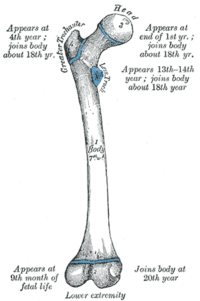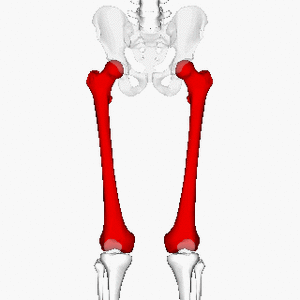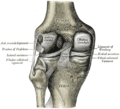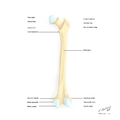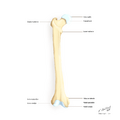Femur facts for kids
The femur is the main bone in your thigh. It's the longest and strongest bone in the human body! This amazing bone connects your pelvis (hip) at the top to your knee at the bottom.
At your hip, the femur forms a special "ball-and-socket" joint. This allows your leg to move freely in many directions. At your knee, the femur creates a "hinge" joint. This joint connects with your patella (kneecap) and the tibia, which is the main bone in your lower leg.
The femur is found in many animals that walk or jump. These include most land mammals, birds, many reptiles like lizards, and amphibians such as frogs. If an animal has four legs, like a dog or a horse, the femur is only in their back legs.
The top part of the femur fits into a cup-shaped area in your pelvic bone. This forms your hip joint. The bottom part of the femur connects with your tibia and kneecap to form your knee joint.
What is the Femur Like?
The femur is the only bone in your thigh. You have two femurs, one in each leg. They angle slightly inward towards your knees. This angle helps them connect properly with your lower leg bones.
This angle is a bit different for everyone. Girls often have wider pelvic bones than boys. This makes their femurs angle inward a bit more.
Sometimes, the femurs angle too much or too little.
- If they angle too much, your knees might touch. This is called knock knee.
- If they don't angle enough, your legs might look bowed. This is called bow-leggedness.
Usually, the angle between the femur and the lower leg is about 175 degrees.
The femur is a type of bone called a long bone. It has a long middle part, like a shaft, and two ends. These ends connect with other bones at your hip and knee.
A cool fact: the length of your femur is usually about 26.74% of your total height! This ratio is pretty much the same for everyone. Scientists can even use a femur bone to estimate how tall a person was, even if they only find part of a human skeleton.
Images for kids
-
A left knee joint from behind, showing the inside parts that hold it together.
-
Femur bones from Moa chicks.
See also
 In Spanish: Fémur para niños
In Spanish: Fémur para niños


